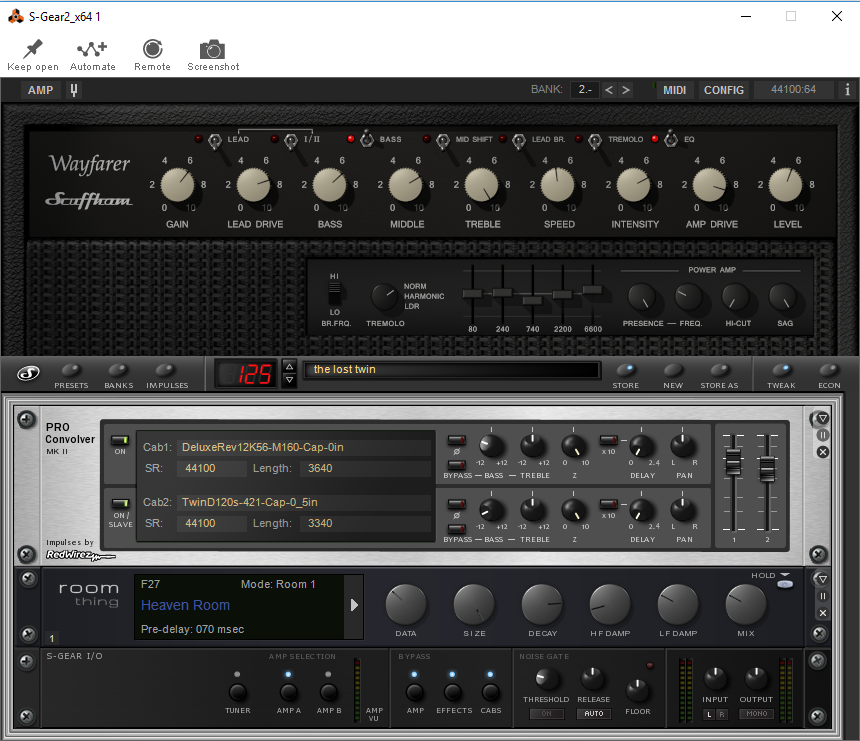Cheers Marco.Marco Raaphorst wrote: ↑16 Dec 2017I think using a pre-amp + IR is not enough. you need power amp simulation as well.
I use tube amps + palmer PDI03 for this in combination with IRs.
Or use this mind blowing power amp in software: https://www.kvraudio.com/product/tpa-1-by-ignite-amps
The Ignite stuff is the best around. Beats anything else available and is even free!
These are little-gems, I just put the pre-amp 'The Anvil' that power amp and the convolver in a combi and saved it as a chain.
My first attempts at tweaking around with it have been very impressive so far. It's revealed a really tight and tidy sound, for picked runs I've been after for ages.
I'm not after that mid-20th century guitar-slinger authenticity by any means but this little setup looks like it might measure up in the contexts that I'm likely to use it in.
Good shout!


